Brass Fetcher Ballistic Testing
Introduction
A selection of 177 caliber airgun pellets were fired across two velocity ranges into ten-percent ballistic gelatin and the resulting impact velocities, penetration depths and bullet expansion was recorded. Ten-percent ballistic gelatin is the United States industry-standard media for static ballistic gelatin testing. Static gelatin testing is mentioned in contrast to dynamic gelatin testing, which involves filming with specialized slow motion video cameras. In the velocity range being studied, 10% ballistic gelatin has been shown in independent studies to closely replicate the bullet resistance of muscle tissue in mammals. We chose muscle tissue as an appropriate target for this report and encourage the reader to view the penetration depths in this report as relatively representative of the tested pellets terminal performance against a rodent animal.
Two airguns were used in this test: the Beeman R-1 and the Crosman RepeatAir 1077:


This choice in airguns accomplished three tasks: it represented a high-end airgun and the increased muzzle velocity that can be expected, more generally-available guns such as the RepeatAir 1077 were physically tested and perhaps most importantly, the data range recorded from both guns was combined with our existing airgun performance database and expected performance curves for other guns and distances between targets are presented at the end of this report.
Tested pellets included: Crosman Premier Lite round nose, Gamo Master Point pointed pellet, Gamo Round lead BB, JSB Predator Polymag, RWS Meisterkugeln wadcutter, Daisy PrecisionMax steel BB, Skenco Hyper-Velocity Field Pellets, a reversed RWS Meisterkugeln wadcutter and the Predator Big Boy pointed pellet.
All shots were fired at a distance of 10 feet, recorded from the tip of the muzzle to the impact face of the ballistic gelatin block. Shots were conducted at room temperature into calibrated 10- percent ballistic gelatin. Impact velocities were recorded by a Pact Model 1 XP chronograph placed immediately in front of the ballistic gelatin block. To ensure fidelity of measurement, the temperature of the penetration track was taken immediately following impact of each pellet. All pellets were found to have penetrated calibrated ballistic gelatin throughout the entire penetration track.
The practice of ‘dieseling’ pellets was also touched upon, by adding a drop of 3-in-1 oil to the skirt of a seated Predator Big Boy pointed pellet and firing in a gelatin block. Combining one of the heaviest-for-caliber pellets available, with dieseling in one of the more powerful airguns also allows us to evaluate the potential lethality of an airgun, should someone be accidentally shot.
Results

We will detail the performances of each pellet, in top-to-bottom order of appearance, below.

A few interesting and perhaps unexpected trends begin to emerge. As evidenced by the penetration depth and nearly identical weight and impact velocities in the ‘low velocity’ section of the data, round nose pellets inflict less damage on the target than do pointed pellets. This is further demonstrated by the ‘high velocity’ section of the data, where the pointed pellet impacted at 968 ft/sec and the round nose pellet impacted at 911 ft/sec. Holding true to the trend, the pointed pellet still penetrates less than the round nose pellet which impacted at a lower velocity.
Holding projectile weight, diameter and velocity constant, the wounding done by a projectile to a fluid medium is governed exclusively by the drag coefficient of the projectile :
FD = ½ ρv2 Cd A
where FD is the fluid drag force experienced by the pellet, ρ is the density of the fluid, v is the velocity of the pellet, Cd is the drag coefficient of the pellet which is dependent on the shape, size and instantaneous velocity of the pellet and A is the frontal surface area of the pellet.
The Conservation of Energy law states that energy lost by the projectile is equivalent to the energy expended into the target. This is expressed by the fluid drag force (FD as above), which damages tissue through direct contact with the projectile and in some cases the radially-outward expansion of the tissue away from the bullet. Thus, if we increase the fluid drag force experienced by the projectile then we increase the damage done to the target.
Addressing the issue of the weight of a pellet and how this influences penetration depth, we fired steel spheres of 0.172” diameter and 5.2gr weight and lead spheres of 0.172” diameter and 8.2gr weight.
Of additional interest is the performance of the RWS Meisterkugeln wadcutter pellet when turned backwards. Typically speaking, the majority of specialty hollowpoint pellets for airguns do not expand significantly due either to a lack of sufficient impact velocity, over-robust designs or a combination of the two. To overcome this, it is possible to load a pellet backwards into an airgun and fire it in this orientation. Most all types of pellets, when fired in such a manner, will expand significantly when striking a fluid medium. The results show that an eleven percent drop in velocity during the ‘high velocity’ series was incurred and a gain of three percent velocity occurred during the ‘low velocity’ series. We caution those velocity figures should be considered anecdotal and general until more in-depth research on the issue takes place.
We will now address the performance in ballistic gelatin of each type of pellet and will present a table for each detailing the performance that you can expect out of your airgun.

The ‘sweet spot’ velocity for the RWS Meisterkugeln and similar pellets is 970 ft/sec at impact. This is an optimal combination of penetration depth and impact velocity which drives pellet expansion.

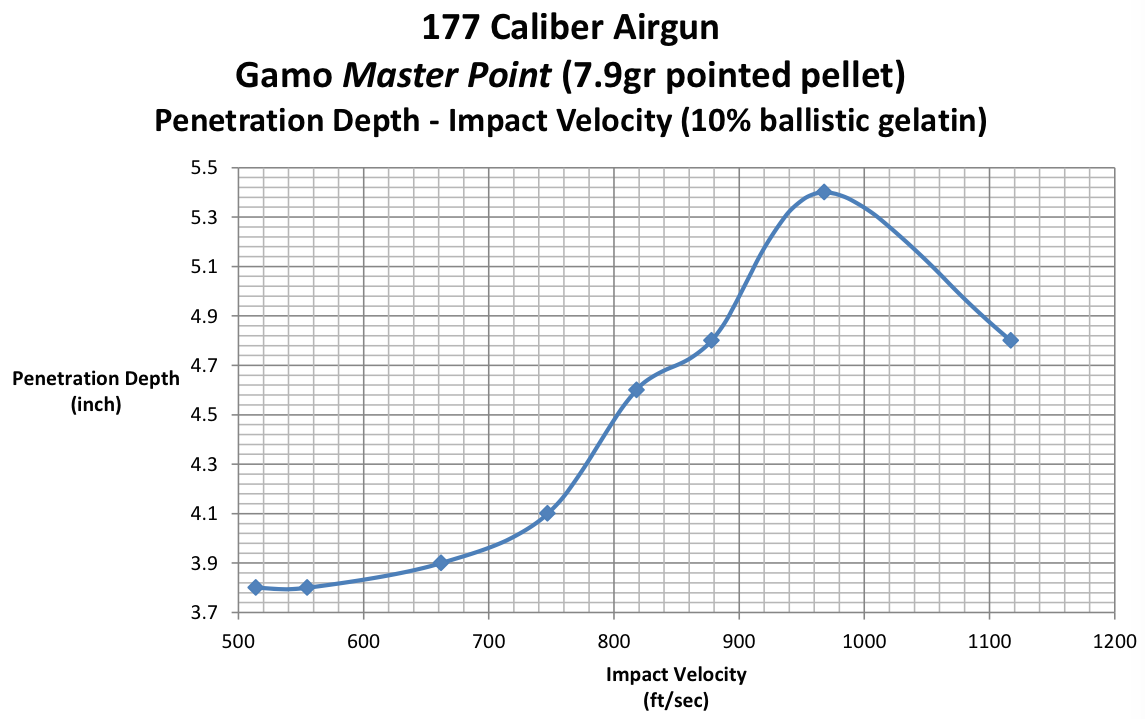
The outlier at 818 ft/sec can be explained by the pronounced sensitivity to bullet stabilization inherent to pointed pellets. If the bullet strikes slightly off-center (due to natural bullet wobble) then the penetration depth will be effected by the bullets increased frontal area. It is possible that this shot hit at or near the ‘zero node’ where the bullet struck almost perfectly perpendicular into the target.


Round nose pellets, for a given weight and impact velocity, provide the deepest penetration but least damage (per inch of penetration) among wadcutter, pointed and round nose pellets.

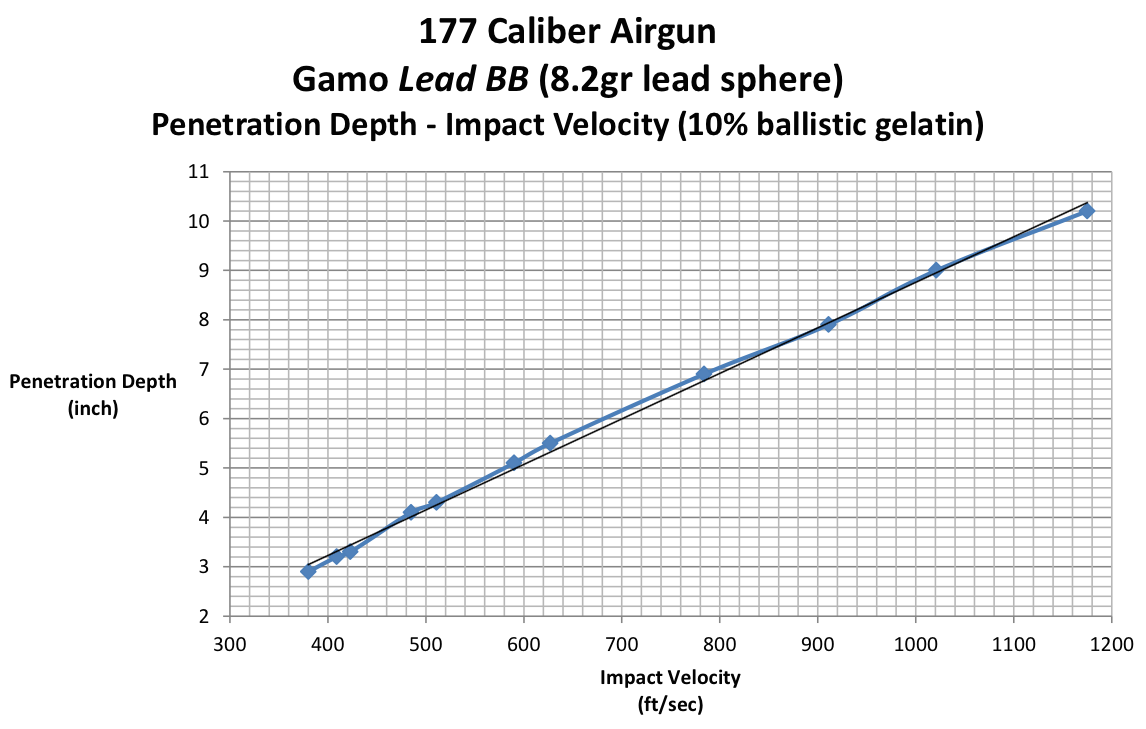
Lead spheres exhibit very small expansion at practical velocity so what we see is more a function of the drag from the gelatin acting on the sphere and the linear momentum of the sphere maintaining penetration ability in an almost linear fashion.
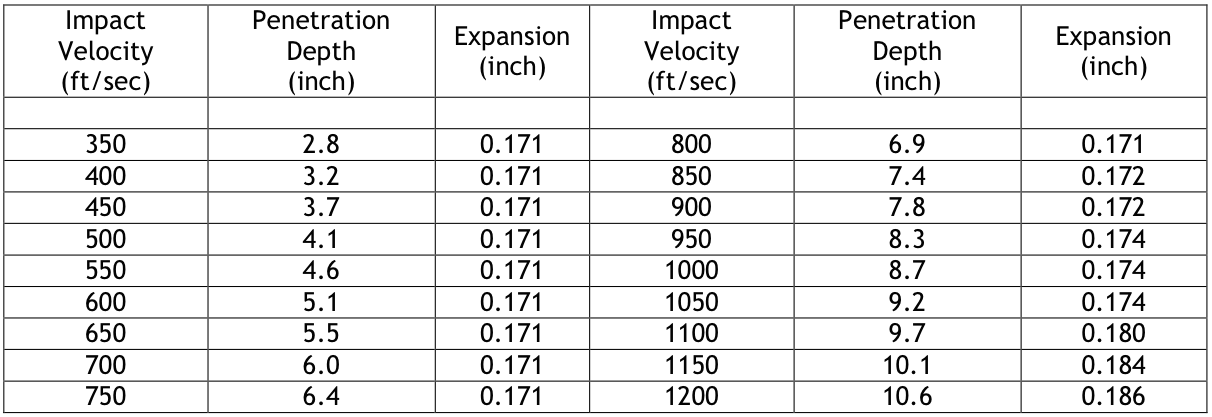
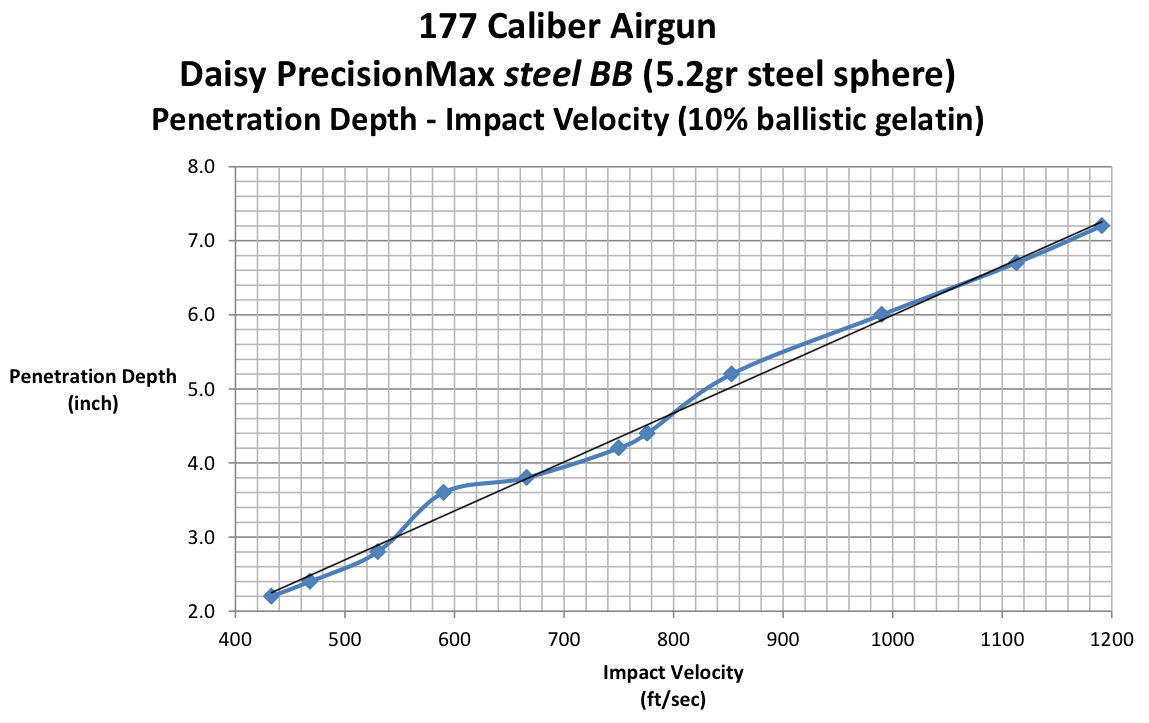
Steel spheres exhibit no expansion at practical velocity so what we see is more a function of the drag from the gelatin acting on the sphere and the linear momentum of the sphere maintaining penetration ability in an almost linear fashion.
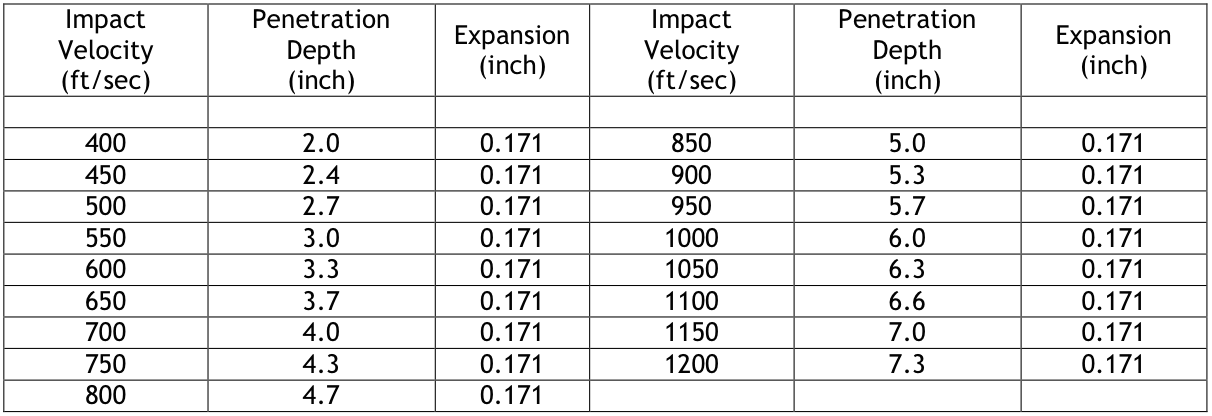
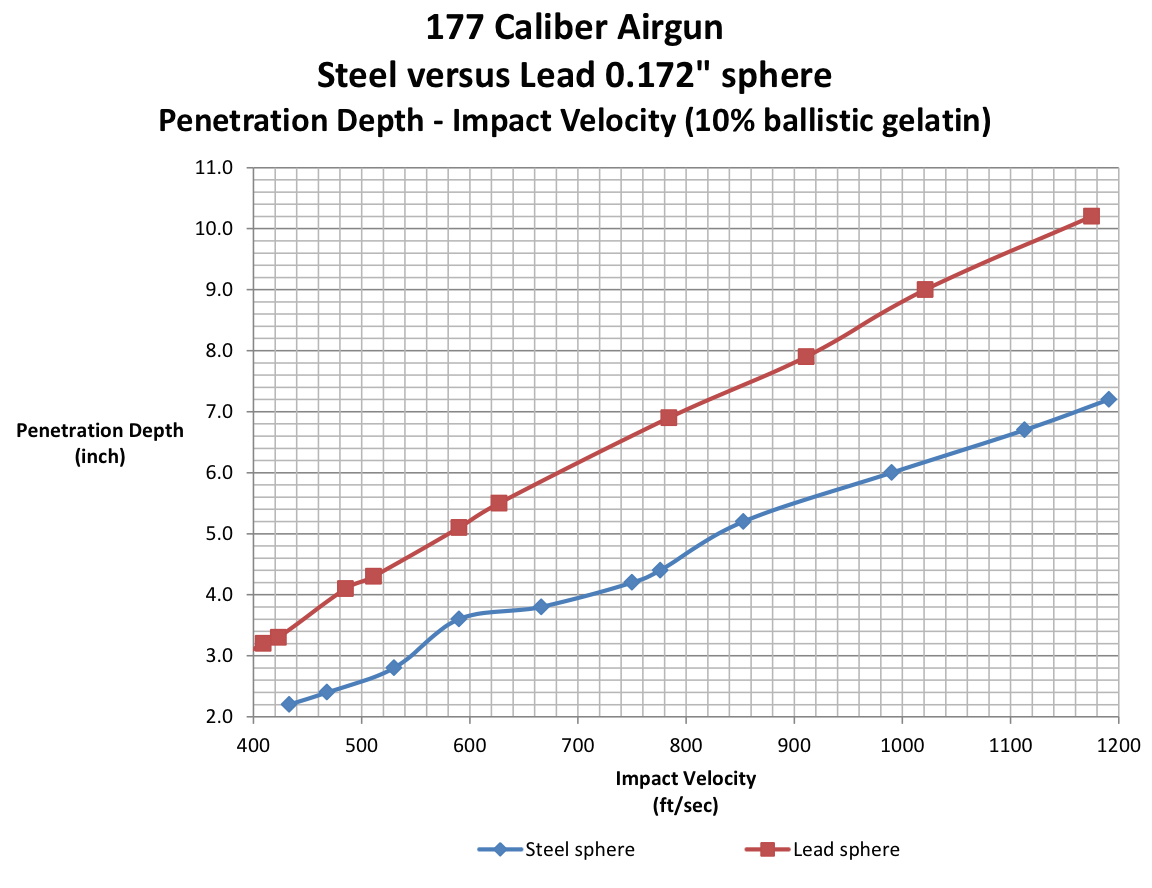
For all velocities 400 ft/sec through 1200 ft/sec, the greater sectional density of the lead sphere leads to greater penetration depths.
To illustrate the difference in terminal performance between steel and lead spheres of the same diameter, we filmed both shots with a slow motion video camera while penetrating 20% ballistic gelatin blocks.
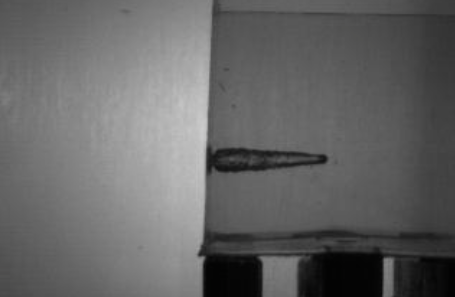
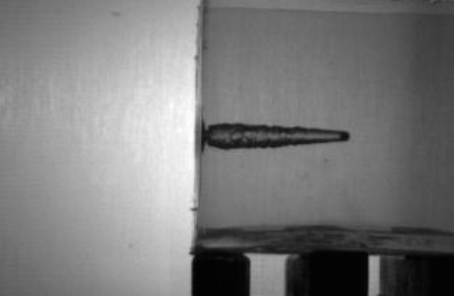

The lower mass of the steel sphere increases KE transfer in the shallow depths of penetration, but tapers off quickly compared to the heavier lead sphere, which is able to maintain velocity better due to its greater momentum.
More exotic pellets like the JSB Predator Polymag, Skenco Hyper-Velocity Field Pellets, a reversed RWS Meisterkugeln wadcutter and the Predator Big Boy pointed pellet were also evaluated.
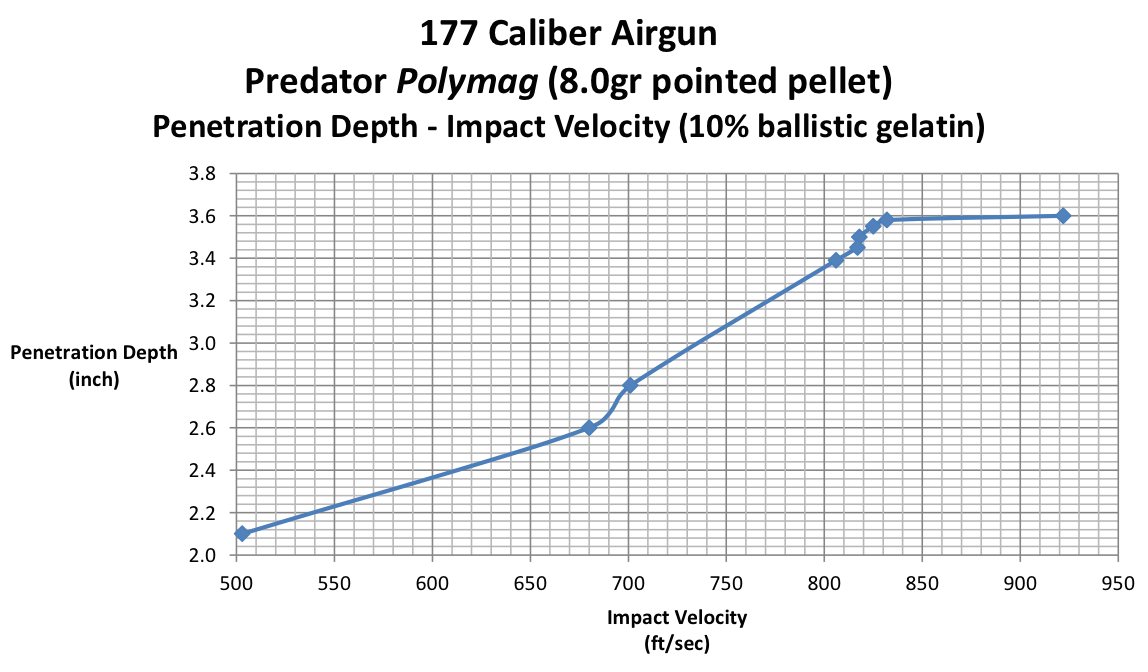
Predator Polymag pellets function like a wadcutter at low velocity and hollowpoints with limited expansion at the higher velocities.
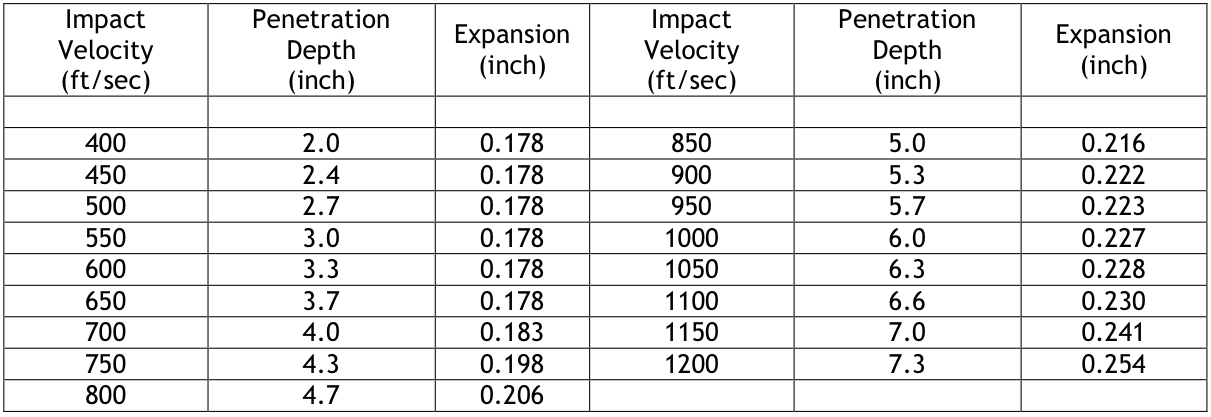
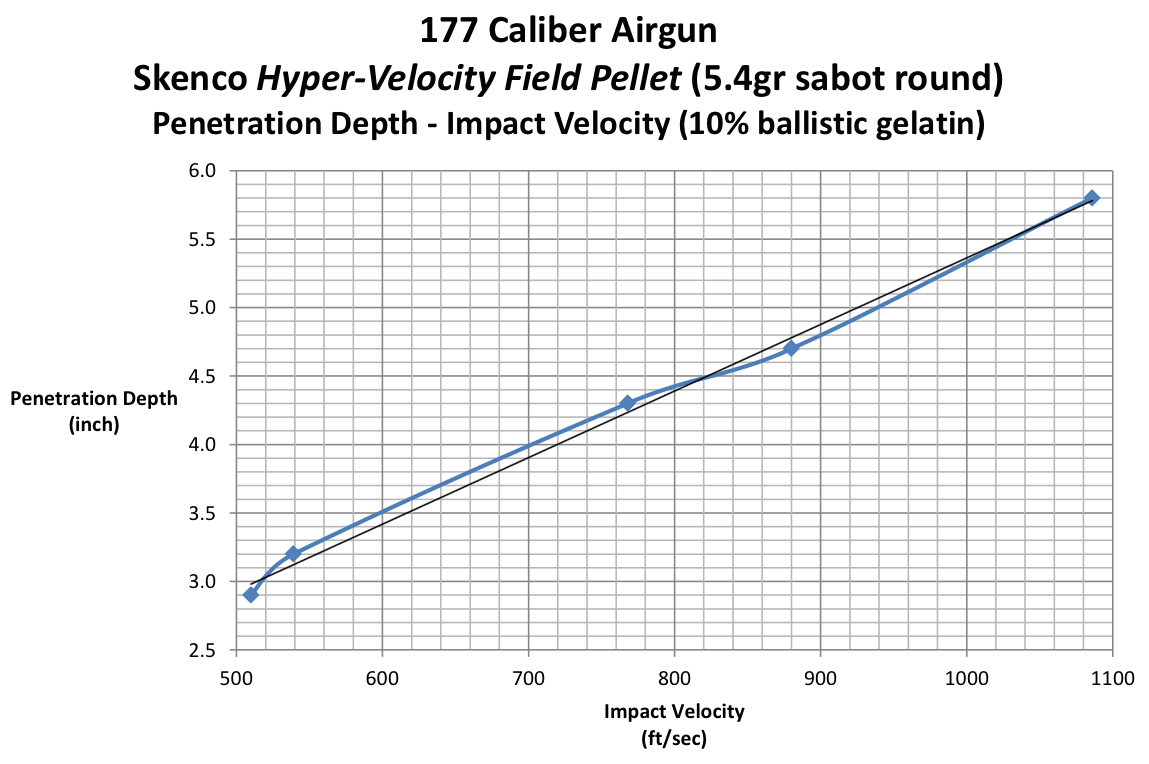
The sub-projectile penetration exhibits a very linear behavior, similar to a BB.


Image 1 illustrates the moment of impact, Image 2 was taken shortly after the sub-projectiles separation from the sabot, Image 3 is the sabot traveling unimpeded through the temporary cavity and Image 4 illustrates the wounding potential of the sabot impacting tissue stressed by the tumbling of the sub-projectile moments prior.
The performance of the Skenco round depends on the separation of the sub-projectile from the sabot and the depth of tumbling of the sub-projectile depends on the impact velocity and the stability of the bullet at the moment of impact. It has the potential to be extremely effective at wounding the vital tissues of varmint animals.
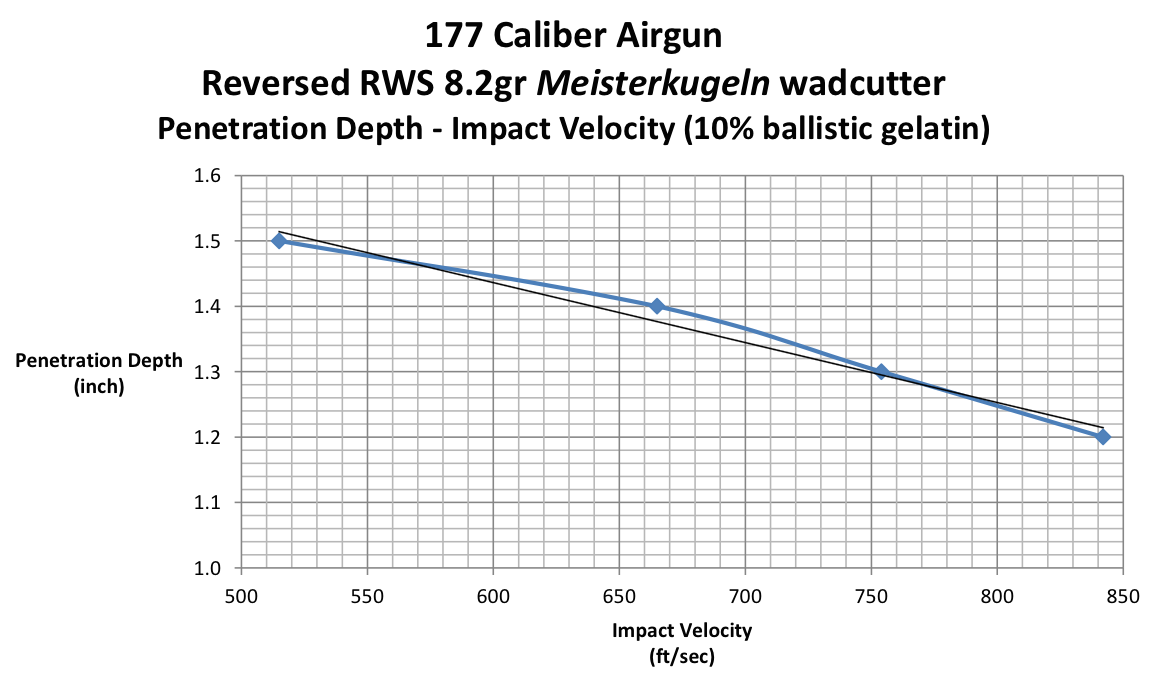
Reversing this pellet leads to massive expansion, but very limited penetration. Good only for very small animals and soda cans filled with water.


The Predator Big Boy pointed pellet demonstrates very deep penetration and minimal tissue disruption. The 819 ft/sec impact velocity was obtained by ‘dieseling’ the skirt of the pellet.

Summary
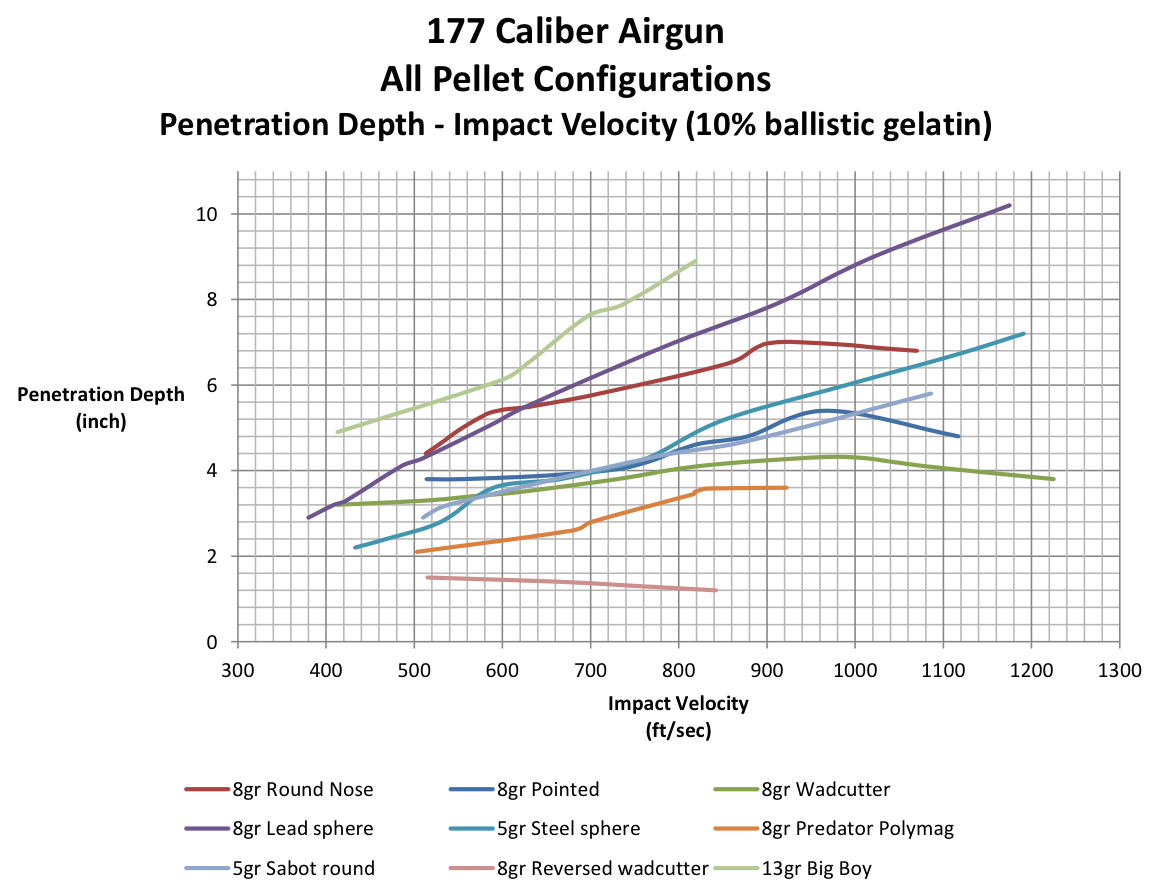
Choosing the optimum ammunition for your airgun hunting application is a matter of choosing a good balance of pellet precision, cost and effectiveness on target.
We recommend that you first estimate the thickness of the intended varmint animal and match that with the chart above to find the ammunition types that will penetrate deeply enough to be effective. The most effective pellet is the pellet that comes to a stop under the opposite side skin of the intended target. After matching the penetration needed to the chart, you can then purchase the appropriate types of ammunition and test for precision. It is advisable also that the velocity of the pellets out of your airgun be verified via chronograph before any live shooting occurs.